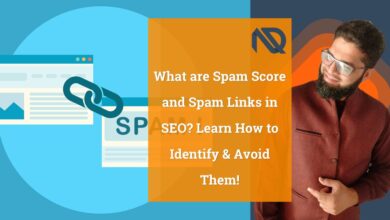What are Dofollow & NoFollow?
Dofollow & NoFollow are types of HTML attributes used in hyperlinks that define how search engines interact with the links and whether they transfer SEO value, also known as “link juice,” to the linked page. These attributes are crucial for managing a website’s backlink profile, SEO strategy, and overall link-building efforts.
Dofollow Links are the standard hyperlinks that allow search engine crawlers to follow the link and pass link equity to the target page, directly impacting search rankings. These links are essential for building domain authority (DA) and improving keyword relevance through optimized anchor text. Commonly found in in-content links, internal links, navigation links, and external links, dofollow links often originate from high-authority pages, significantly influencing ranking potential and crawling efficiency.
On the other hand, NoFollow Links include the HTML attribute rel="nofollow" that instructs search engines not to pass SEO value to the linked page. These links are primarily used for spam control, paid link compliance, and user-generated content (UGC) such as comments or forum posts. Frequently placed in comment sections, social media posts, and footer links, nofollow links contribute indirectly by driving referral traffic and enhancing brand visibility, even without passing link equity. Google has expanded the nofollow attribute with rel="sponsored" for paid links and rel="ugc" for user-generated content to further clarify their purpose.
From a technical perspective, dofollow links instruct crawlers to follow and index the target page, while nofollow links discourage this process. Both link types must align contextually with the content, ensuring relevance and natural integration. Tools like Ahrefs, SEMrush, and Google Search Console enable the monitoring of backlinks and differentiation between dofollow and nofollow links, while browser extensions like MozBar quickly identify link attributes.
The SEO impact of these links is significant. Dofollow links directly enhance ranking potential, backlink diversity, and domain authority, while nofollow links support spam avoidance, referral traffic, and compliance with guidelines. A natural mix of both link types creates a balanced backlink profile, reducing the risk of Google penalties for manipulative link-building practices.
Challenges include spam risks, anchor text overuse, and maintaining a diverse link profile. Best practices involve prioritizing links from high-authority sites, maintaining anchor text diversity, using nofollow for non-endorsed or paid links, and conducting regular backlink audits to monitor link quality and relevance.
The long-term benefits of managing dofollow and nofollow links effectively include improved search visibility, domain authority growth, higher keyword rankings, and referral traffic. A balanced approach supports natural backlink growth, enhances brand awareness, and ensures a sustainable, compliant online presence in the competitive digital landscape.
An In-Depth Overview!
Want SEO Consultancy for your project?
If you feel that you are lost in somewhere middle, I am here to help you with this.



